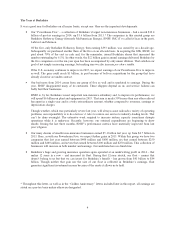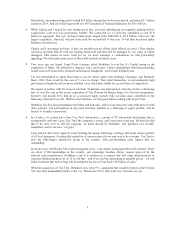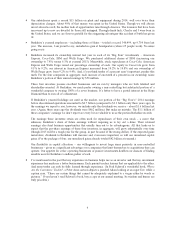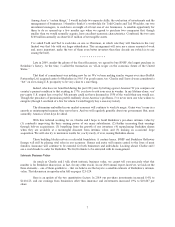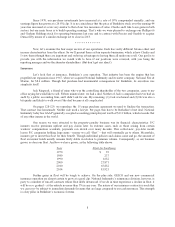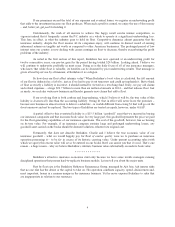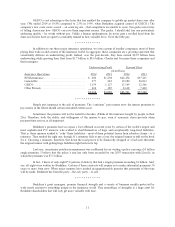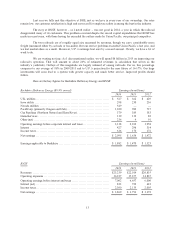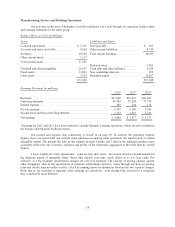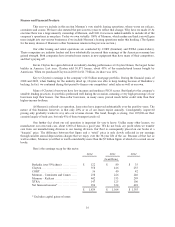Berkshire Hathaway 2014 Annual Report Download - page 16
Download and view the complete annual report
Please find page 16 of the 2014 Berkshire Hathaway annual report below. You can navigate through the pages in the report by either clicking on the pages listed below, or by using the keyword search tool below to find specific information within the annual report.
Manufacturing, Service and Retailing Operations
Our activities in this part of Berkshire cover the waterfront. Let’s look, though, at a summary balance sheet
and earnings statement for the entire group.
Balance Sheet 12/31/14 (in millions)
Assets Liabilities and Equity
Cash and equivalents ...................... $ 5,765 Notes payable ........................... $ 965
Accounts and notes receivable ............. 8,264 Other current liabilities ................. 9,734
Inventory .................................. 10,236 Total current liabilities .................. 10,699
Other current assets ....................... 1,117
Total current assets ........................ 25,382
Deferred taxes .......................... 3,801
Goodwill and other intangibles ............ 28,107 Term debt and other liabilities ........... 4,269
Fixed assets ............................... 13,806 Non-controlling interests ................ 492
Other assets ............................... 3,793 Berkshire equity ........................ 51,827
$71,088 $71,088
Earnings Statement (in millions)
2014 2013*2012*
Revenues .................................................................. $97,689 $93,472 $81,432
Operating expenses ........................................................ 90,788 87,208 75,734
Interest expense ............................................................ 109 104 112
Pre-tax earnings ............................................................ 6,792 6,160 5,586
Income taxes and non-controlling interests ................................. 2,324 2,283 2,229
Net earnings ............................................................... $ 4,468 $ 3,877 $ 3,357
*Earnings for 2012 and 2013 have been restated to exclude Marmon’s leasing operations, which are now included in
the Finance and Financial Products section.
Our income and expense data conforming to GAAP is on page 49. In contrast, the operating expense
figures above are non-GAAP and exclude some purchase-accounting items (primarily the amortization of certain
intangible assets). We present the data in this manner because Charlie and I believe the adjusted numbers more
accurately reflect the true economic expenses and profits of the businesses aggregated in the table than do GAAP
figures.
I won’t explain all of the adjustments – some are tiny and arcane – but serious investors should understand
the disparate nature of intangible assets. Some truly deplete over time, while others in no way lose value. For
software, as a big example, amortization charges are very real expenses. The concept of making charges against
other intangibles, such as the amortization of customer relationships, however, arises through purchase-accounting
rules and clearly does not reflect reality. GAAP accounting draws no distinction between the two types of charges.
Both, that is, are recorded as expenses when earnings are calculated – even though from an investor’s viewpoint
they could not be more different.
14


